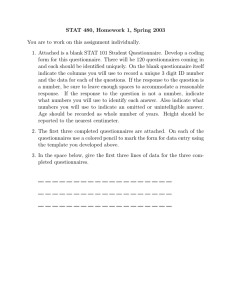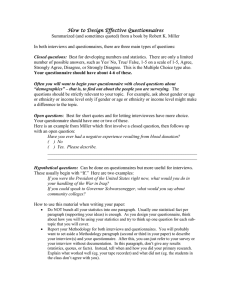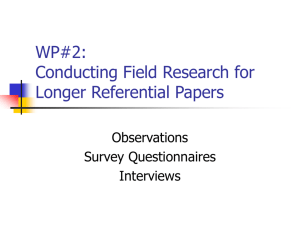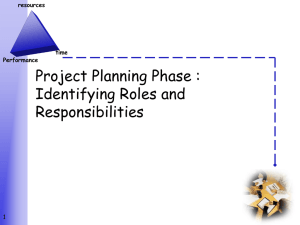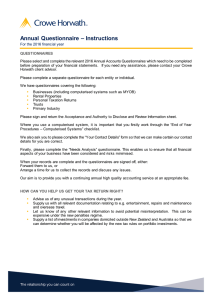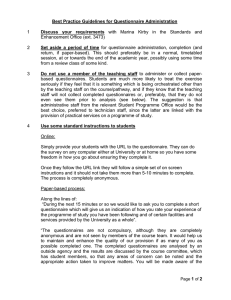Developing Training Needs Analysis
advertisement
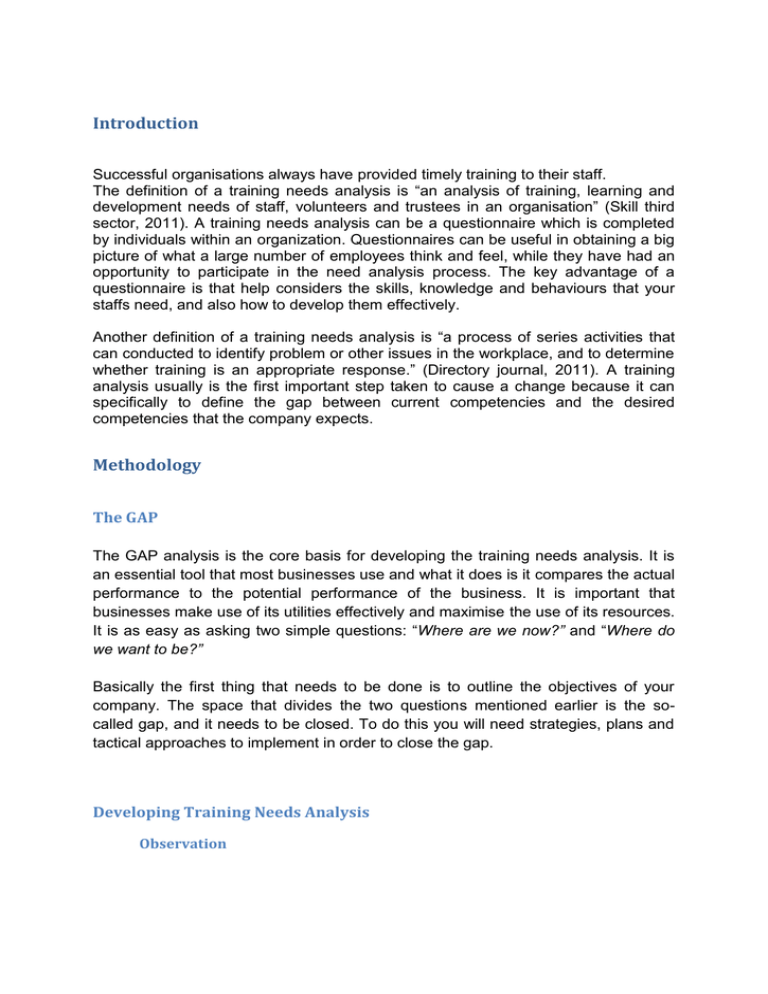
Introduction Successful organisations always have provided timely training to their staff. The definition of a training needs analysis is “an analysis of training, learning and development needs of staff, volunteers and trustees in an organisation” (Skill third sector, 2011). A training needs analysis can be a questionnaire which is completed by individuals within an organization. Questionnaires can be useful in obtaining a big picture of what a large number of employees think and feel, while they have had an opportunity to participate in the need analysis process. The key advantage of a questionnaire is that help considers the skills, knowledge and behaviours that your staffs need, and also how to develop them effectively. Another definition of a training needs analysis is “a process of series activities that can conducted to identify problem or other issues in the workplace, and to determine whether training is an appropriate response.” (Directory journal, 2011). A training analysis usually is the first important step taken to cause a change because it can specifically to define the gap between current competencies and the desired competencies that the company expects. Methodology The GAP The GAP analysis is the core basis for developing the training needs analysis. It is an essential tool that most businesses use and what it does is it compares the actual performance to the potential performance of the business. It is important that businesses make use of its utilities effectively and maximise the use of its resources. It is as easy as asking two simple questions: “Where are we now?” and “Where do we want to be?” Basically the first thing that needs to be done is to outline the objectives of your company. The space that divides the two questions mentioned earlier is the socalled gap, and it needs to be closed. To do this you will need strategies, plans and tactical approaches to implement in order to close the gap. Developing Training Needs Analysis Observation Interviews Questionnaires Recommendations Based on the data and information gathered, the students have come up with the following recommendations: 1. A variety of strategies be used to conduct a training needs analysis in the SIMWEN environment. Trainers should make use of different approaches such as interviews, survey questionnaires, interactive discussions, and observation. 2. Conduct a regular assessment of training needs for employees. 3. Re-evaluate the goals and processes that the company undertakes to ensure that employees (SIMWEN students) are meeting their full potential in regards to the work that they do. Identifying Training Needs Question 1. Are we committed to providing training and developing the knowledge and skills of our employees? 2. Is there an induction process in place for new staff? 3. Are the managers competent in supporting the learning and development of their staff? 4. Is there a training strategy for development of staff? 5. Do we have a training budget? 6. Is there an appraisal system in place for employees? 7. Do we evaluate our training? Yes/No 8. Do we have a system to support employees in identifying their learning needs? 9. Do we have up to date job descriptions for all employees? 10. Do we want to work towards good practise standards in managing and developing our people? S.W.O.T. Analysis Strengths Weaknesses Opportunities Threats References 1. Skill third sector, 2011, What is training needs analysis, Retrieved: 12th May 2011, from: http://www.skillsthirdsector.org.uk/training_needs_analysis/what_is_training_needs_analys is/ 2. Directory journal, 2011, How to conduct a training needs analysis, Retrieved: 12th May 2011, from: http://www.dirjournal.com/guides/how-toconduct-a-training-needs-analysis/ 3. The Marketing Teacher, 2011, The GAP Analysis, Retrieved: 19th May 2011, from: http://www.marketingteacher.com/lesson-store/lesson-gapanalysis.html
